Mountains and Valley do not meet,
2023
Automatic heating device,Canvas, sand from Liao River, Xinmin, China, Stone from Alps, Zell am See, Austria
80 x 120 cm
Image by Max Gorbatskyi, Courtesy Cooke Latham Gallery
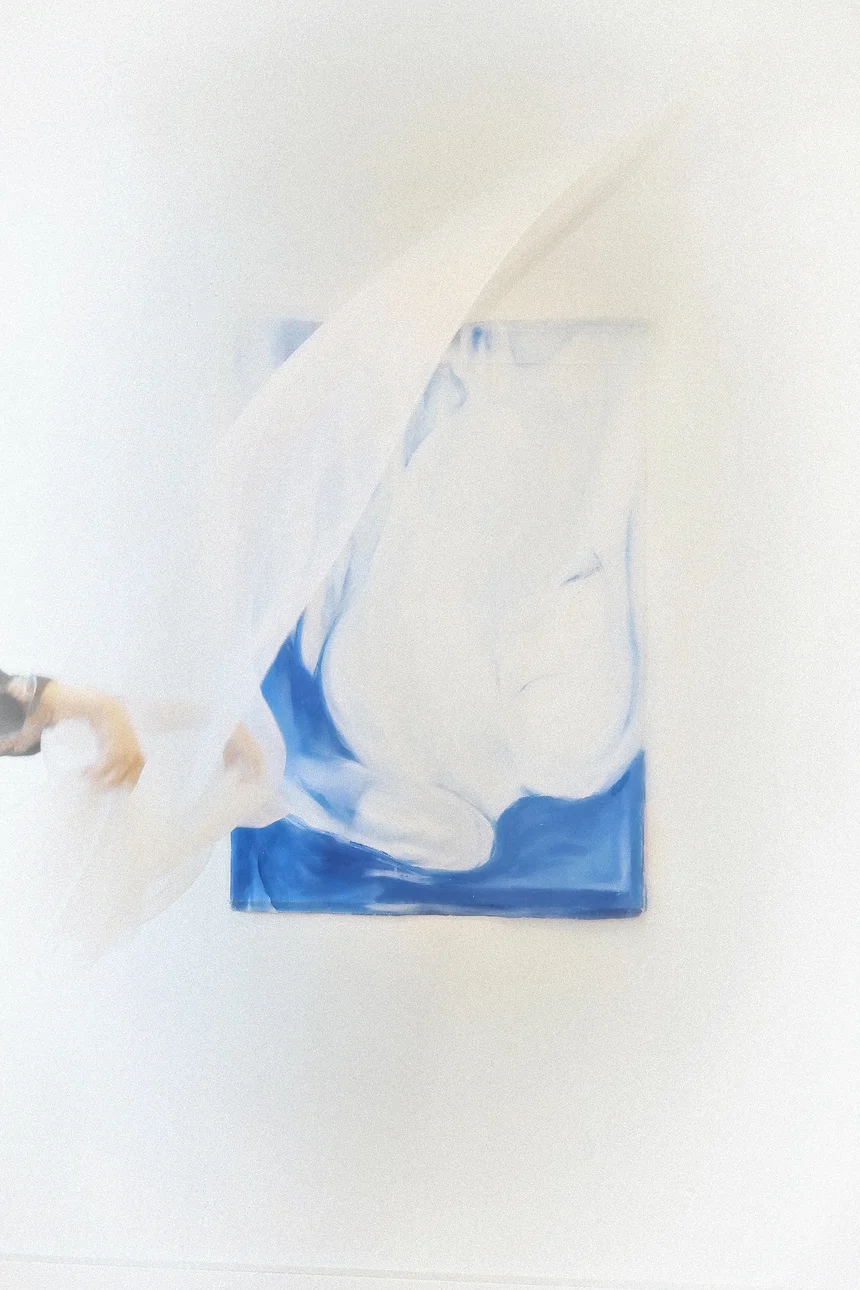
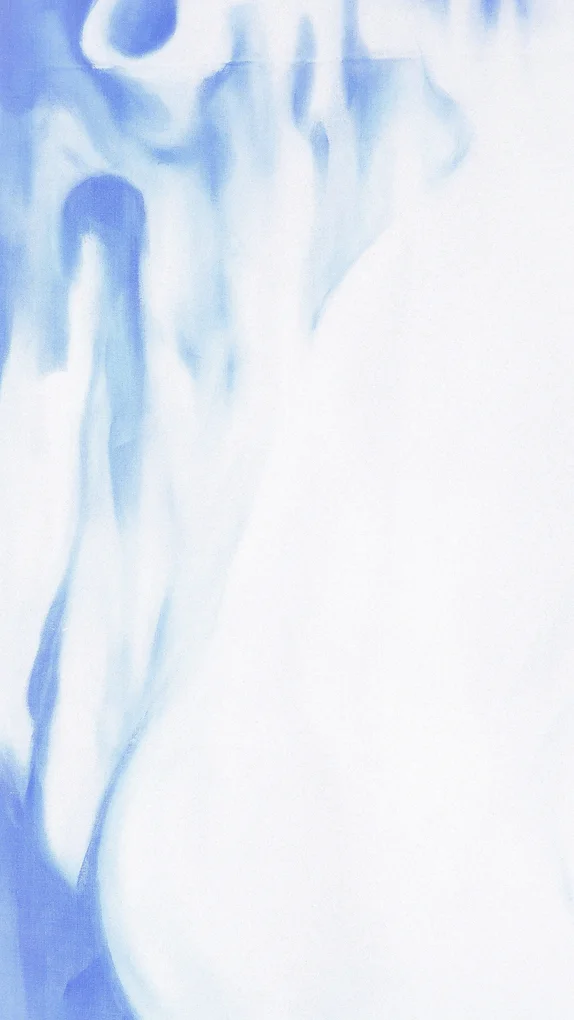

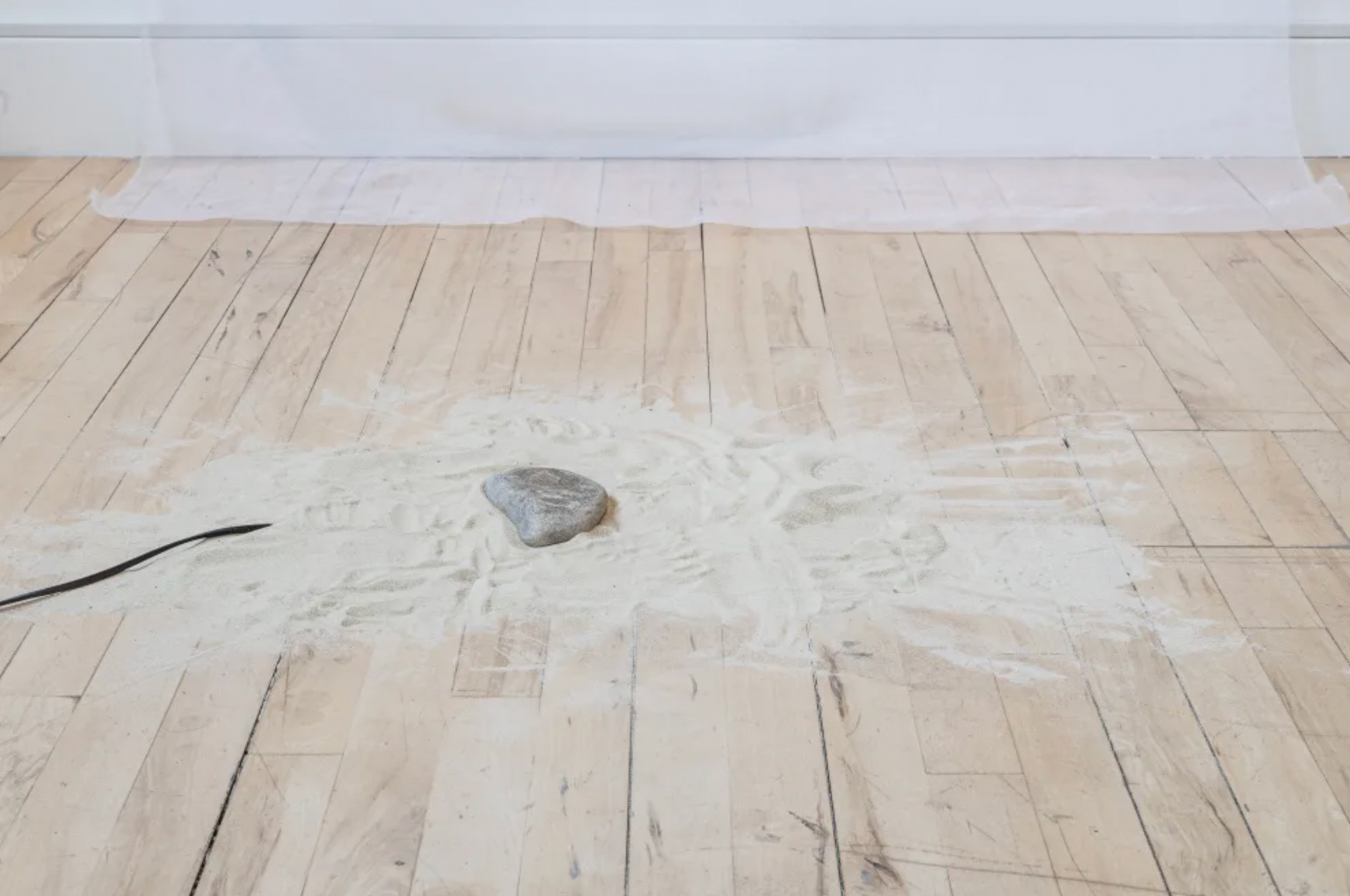
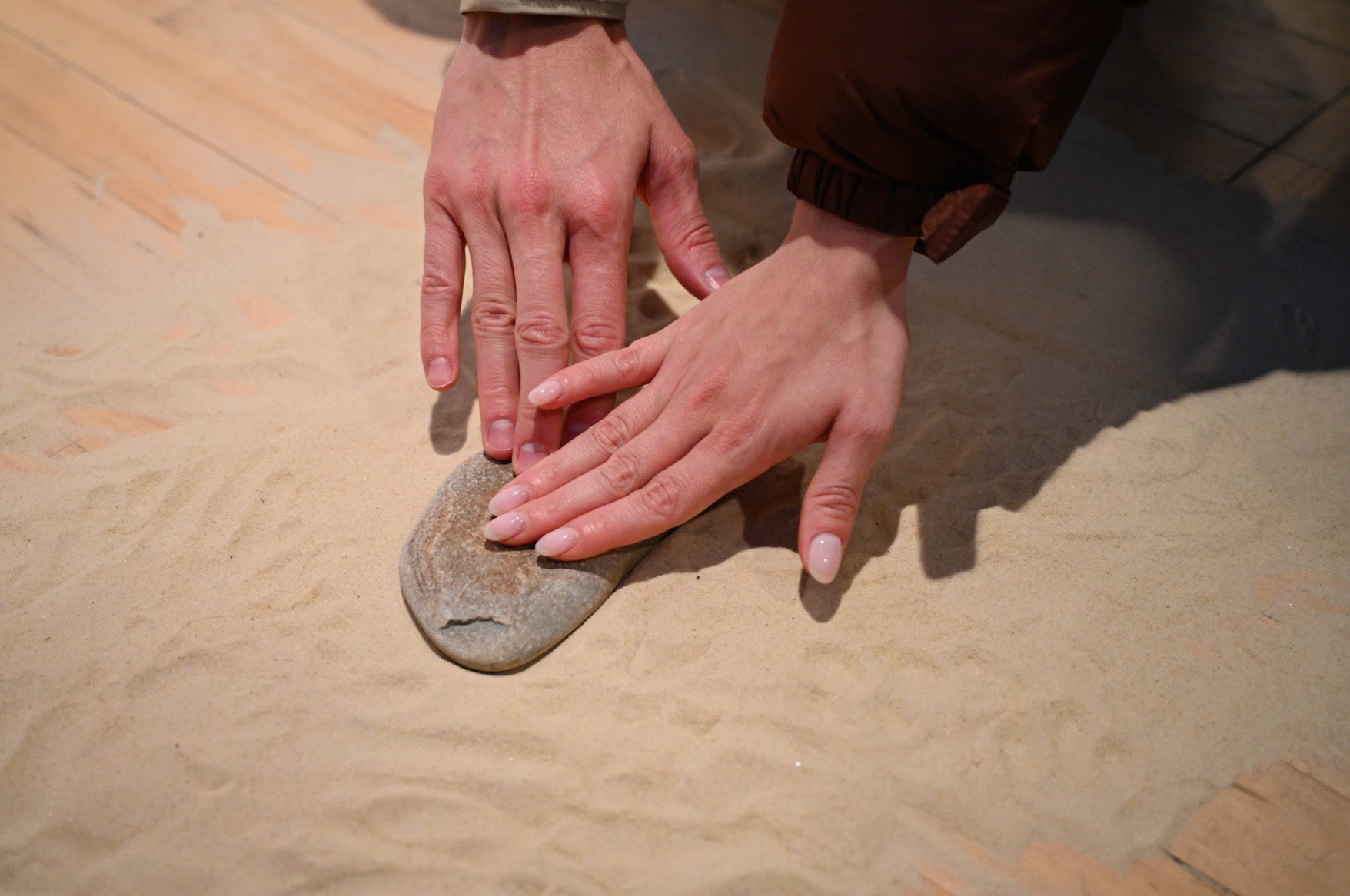
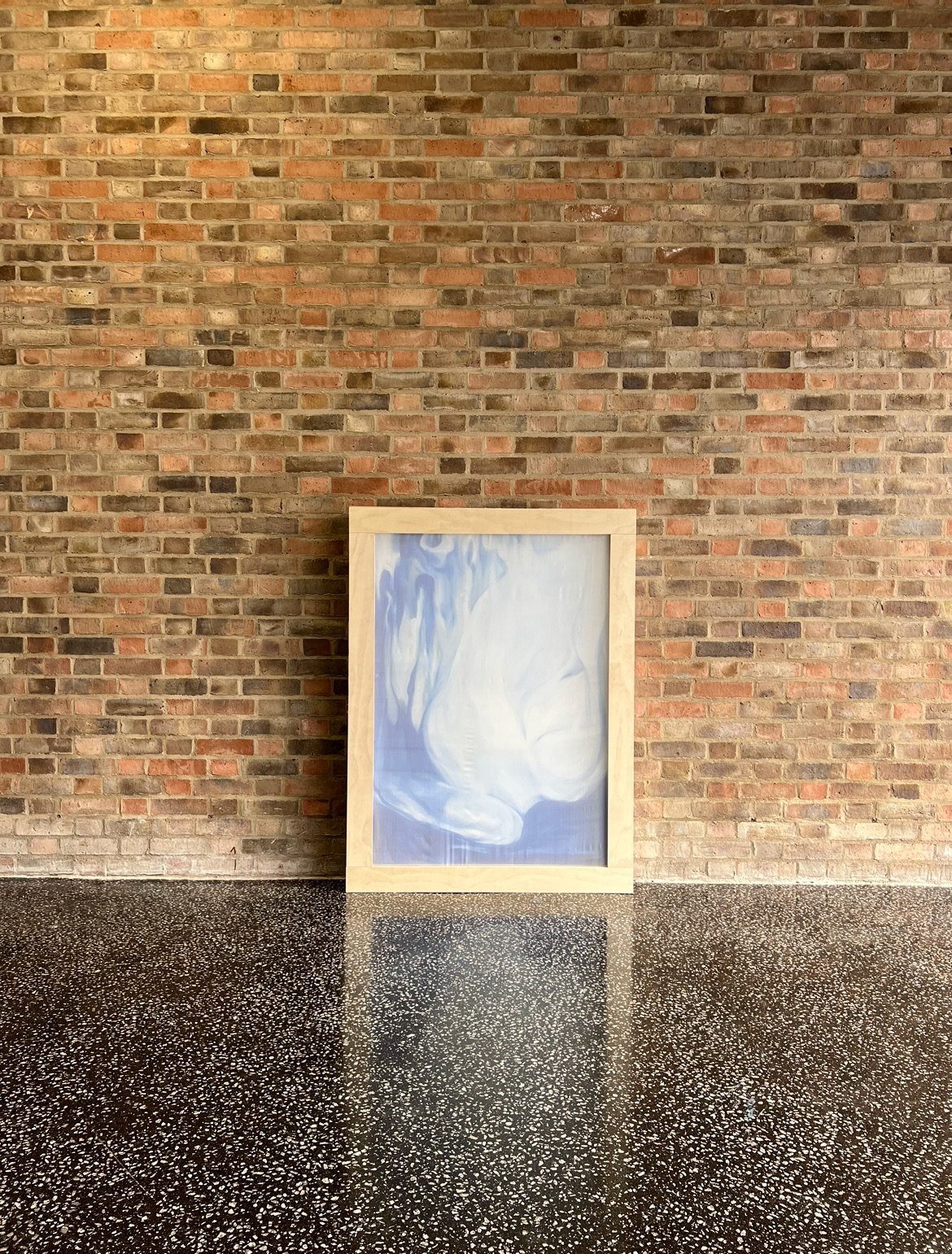
This work delves into the enchanting and captivating aspects of romantic experiences during travel, evoking a sense of intrusion under moonlit skies in foreign lands. It intricately connects personal experiences with the profound grief felt by Asian women living far away from their homelands due to the unstoppable process of globalization. This exploration aims to shed light on the emotional transformations, psychological isolation, and power dynamics experienced by women engaged in cross-cultural and cross-regional romantic relationships.
Rather than relying on traditional research methods focused on variables and data, this study centers on translating private emotions and subtle nuances. It takes the form of a genuine journey, an extended encounter. The researcher uses personal methods such as painting upon waking and extracting colors from daily diaries to delve into the imagery created by the translation of memories across time and space. Expressive forms like poetry, painting, and temperature installations serve as mediums to convey the gendered tensions and complexities inherent in such romantic relationships. The focus on colors and temperature juxtapositions aims to create a three-dimensional representation that bridges the gap between sensory and tactile imagery, thereby recreating the sensations of memory and emotions.
Through the exchange of natural materials with unique geographical attributes, the study examines the unbalanced experiences encountered in these relationships, symbolized by the confrontation of natural colors representing the intimate roles of both parties. It acknowledges the inequality and sadness present in romantic relationships that transcend racial, cultural, and geographic barriers but refrains from making judgments about who is right or wrong.
The dissonance arising from cross-cultural connections intensifies during international travel and bonding, deepening the understanding and empathy for factors like gender, racialized bodies, and class privilege. This dissonance manifests in behaviors and habits towards each other, arising from the newly accepted "speed of travel," which introduces unknown tensions, burdens, sadness, and fears of unfortunate outcomes. Attempting to overcome geographical, linguistic, and cultural barriers blurs the perception of time and disposition, with sexuality emerging as a powerful tool for deep connection. The study explores the hazy and sensitive nature of femininity that makes individuals forget about time and themselves in these relationships.
Visual experiences of vulnerable women navigating unfamiliar environments, building romantic connections, and encountering various power structures shape their emotions. By visualizing the temperature of physical contact, the warmth and love felt in the body are relatable, but so are moments of heartbreak and loss, leading to shifting emotions from warmth to cold.
The colors blue and white occupy the memory of intimacy, symbolizing various aspects of the romantic experiences. Desire is likened to a canyon, representing movement and the primal desires of human nature. The interweaving of colors is seen as a dance of materiality and desire, emphasizing the entanglement of bodies and the invasion of matter represented by colors—specifically, the mutual invasion and acceptance between white and blue materials in the paintings. These material interactions born of desire create a disconnected movement that transcends geography and time.
"I covered it with sunlight.”
"The noise of the city was heavy... The room was dimly lit, and we maintained silence. The continuous noise of the city surrounded us, as if the room itself was on a moving train.
There was no glass on the windows, only curtains and blinds. Through the curtains, one could see the intricate shadows of people passing by on the sidewalk under the sunlight.
Pedestrians hurriedly passed by, their figures divided into distinct lines by the wooden slats of the blinds...
Now, as the sun set, the darkness of night descended. The bed and the city were separated only by these translucent blinds and thin curtains. There was no solid material to keep us apart from others. They were unaware of our existence.”
There was no glass on the windows, only curtains and blinds. Through the curtains, one could see the intricate shadows of people passing by on the sidewalk under the sunlight.
Pedestrians hurriedly passed by, their figures divided into distinct lines by the wooden slats of the blinds...
Now, as the sun set, the darkness of night descended. The bed and the city were separated only by these translucent blinds and thin curtains. There was no solid material to keep us apart from others. They were unaware of our existence.”
This passage describes the scene in Marguerite Duras' novel "The Lover" when the female protagonist first enters the blue house of the Chinese man. In 1930, Duras met Li Yun Tai by the Mekong River and asked who he was. He said he had just returned from studying in Paris and now lived in a large house with a blue glass railing by the river, which was his home. I can never forget the scene when I first read about the man and the woman in "The Lover" in that house near the street. They were entangled in each other's embrace, while outside, the sounds of street vendors and the close footsteps of people filled the air. A sheer white curtain separated them from the crowd like sunlight, fragile in its presence but seemingly able to protect the vulnerable existence of the woman in an unfamiliar environment. It gently isolated the fears, injustices, and sorrows that come with fear, injustice, and grief across race and geography. It breaks with traditional notions of sensuality and gender hierarchy that often confine young women to relationships. The notion of barriers is closely related to the geographical influences in my personal experience of intimate relationships. Whether estranged, incommunicative, or bound by an invisible system of rules, such barriers not only keep us from being fully together, but also unexpectedly preserve the beauty of ambiguity and incomprehension. This is the meaning that the white gauze gives to the interior; it's intense, aloof, and you can't get in, as if you're all on the outside looking in at her.
Artist statement
Weiyu Dou is a multidisciplinary artist who investigates states of longing across painting, sculpture, writing and travel. Her auto-led practice revolves around the temporal, geographical and emotional dimensions of her own relationships with lovers once held then lost. Travelling in search of them – dreaming them, too – she ruminates on the temperature and colour of their skin, which she re-figures to re-experience in her journeys across mountains and rivers. She studied oriental painting at Hongik University in Korea, and received her Bachelor of Arts in Chinese Painting from the Luxun Academy of Fine Arts in China in 2022. She is currently studying in RCA MRes: Fine art
93 Baltimore House, Junper Drive, London
SW18 1TT
+44 07947489573
SW18 1TT
+44 07947489573
douweiyu0901@gmail.com
https://www.weiyudou.com